
April 1
| 1919 | Thomas H. MacDonald of the Iowa State Highway Commission is appointed "engineer in immediate charge of work under the Federal aid road act," pending reexamination by Congress of his salary. He had been interested in the position of BPR Director, and had been recommended by AASHO, but balked at the low pay ($4,500 a year). On July 1, 1919, he was appointed to fill the renamed position of "Chief of Bureau" at a salary of $6,000. MacDonald headed the Agency until 1953. |
| 1953 | Francis V. du Pont assumes responsibility as Commissioner of BPR. When a reporter asks why he came out of retirement to take the job, du Pont replies, "I can assure you I'm not in it to make a living." The job pays $16,000 a year. He adds that the BPR is unique and that there is "no yardstick to compare it with other agencies." |
| 1967 | On the Mall in Washington, DC, Secretary of Transportation Alan Boyd officiates at ceremonies marking the opening of the new USDOT. The USDOT is the fourth largest Federal Department, with 100,000 employees. Within USDOT, FHWA is established as a merger of BPR, the National Traffic Safety Agency, and the National Highway Safety Agency, all from the Commerce Department, and the motor carrier safety functions of the ICC. Although BPR remains in the Matomic Building at 1717 H Street, NW., FHWA headquarters is established under Administrator Lowell Bridwell in the Donohoe Building at Sixth and D Streets, SW. |
| 1992 | "Don't be April Fooled" is the motto as the single commercial driver's license requirement goes into effect pursuant to the Commercial Motor Vehicle Safety Act of 1986. Jill Hochman and Stan Hamilton of the Office of Motor Carriers orchestrated the most massive public education outreach campaign in FHWA history ("everything but skywriting and smoke signals") to get the word out to 5 million drivers who needed licenses by the deadline. |
April 2
| 1962 | Miss Beverly Cover (pronounced KOH-ver), 22, of Cumberland, MD, becomes the first woman to take a full-time position with BPR as a highway engineer. A graduate of the Georgia Institute of Technology, Miss Cover is sworn in by Deputy Administrator D. Grant Mickle while top officials Frank Turner, O. K. Normann, and Carl C. Saal look on. Miss Cover is assigned to Mr. Saal's Traffic Operations Division, where her work will include field studies using BPR's "Traffic Analyzer" to collect data on traffic flow. In 1964, Miss Cover, now Mrs. Beverly C. Norris, resigned to become a full-time mother and housewife, the same week BPR's second woman engineer, Miss Karen M. Porter, reported for duty in the Automatic Data Processing Division. Miss Porter says, "My teachers helped and encouraged me. They seemed to take pride in the fact that a girl was studying civil engineering."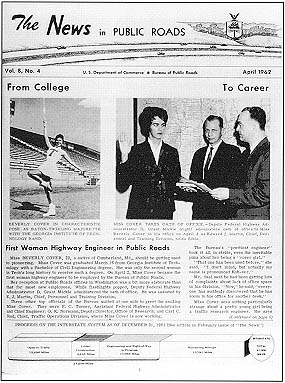
|
| 1971 | E.H. Ted Holmes, who joined BPR in 1928, retires as Associate Administrator for Planning. |
| 1986 | Senator William Proxmire gives his monthly "Golden Fleece" award for "hitting the taxpayers with a $21 million toll to pay for unused and unneeded roads and bridges." |
| 1987 | By a 67-to-33 vote, the Senate overrides President Ronald Reagan's veto of the Surface Transportation and Uniform Relocation Assistance Act, even after the President drove to Capitol Hill to lobby against the measure, which he vetoed largely because it increased the number of "demonstration" projects to what was then a record high. The Act, which extends highway user fees for 5 years and funds the Strategic Highway Research Program, is widely perceived as the final authorization of the Interstate era. |
April 3
| 1902 | A passenger train from Washington, DC, arrives in Charlottesville, VA, for the Jefferson Memorial and Inter-State Good Roads Convention (April 2-4), the final stop for the Southern Railway Good Roads Train (see November 24, 1901). The train carries OPRI's M. O. Eldridge, Assistant Secretary of Agriculture J. H. Brigham, General Nelson A. Miles, and several Congressmen. On April 2, General Roy Stone had addressed the convention ("The Necessity of Congressional Action in Road Improvement"), as had Director Martin Dodge ("Removing the Burdens of Bad Roads"). The primary purpose of the convention, sponsored in part by OPR, is to back a memorial road from Charlottesville to Thomas Jefferson's Monticello, an idea attributed to Dodge. Today's afternoon session is called to order by Dr. W. C. N. Randolph, grandson of Thomas Jefferson.
"Then, the attention of Congress was awakened . . . and the Office of Road Inquiry was established. What that office has done you well know, and I think I may say without vanity that its plan of operation and its effective methods of enlisting outside aid in all its measures have drawn more private means to supplement a small appropriation than has often, if ever, been done in any department of the Government." |
April 4
| 1986 | Administrator Rex Whitton issues a checklist of desirable construction practices, drawn up with help from industry, to improve contractors' image. This is a followup to a program outlined on February 21, 1966, for carrying out construction in a way that minimizes public inconvenience and fully considers the interests of highway users, adjacent property, and natural resources. |
| 1994 | Administrator Rodney Slater and his staff complete preparations for a 14-day, 14-State, border-to-border road tour highlighting the vital role transportation plays in the economy. The tour begins tomorrow in Buffalo, NY, and ends in Laredo, TX, on April 18. "President Clinton has challenged all of us to rebuild America, and Transportation Secretary Federico Pea is leading the effort to invest in transportation infrastructure, which will increase productivity, stimulate the economy, and create jobs. This trip will give me a firsthand opportunity to look, listen and learn about the transportation needs of people in their communities."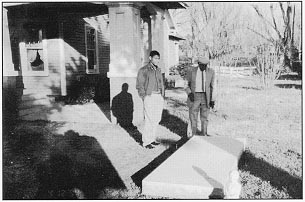
|
April 5
| 1932 | The first stage of the final Bates Road Test, near Springfield, IL, is completed when the loaded trucks used in the test had made 1,000 round trips over the 63 test sections on the 2-mile road. The tests, which are sponsored by the Illinois Division of Highways and BPR, demonstrated the need for control of wheel loads and result in the use of a thickened edge on concrete pavements. |
| 1962 | In an important message to Congress, President John F. Kennedy recommends that approval of Federal-aid highway projects in any metropolitan area should be contingent on a finding by the Secretary of Commerce, via BPR, that the projects are consistent with adequate, comprehensive development plans for the area or are based on a continuing planning process carried on cooperatively by the States and local communities. The recommendations are largely based on a joint report on urban transportation submitted to the President on March 28 by Secretary of Commerce Luther Hodges and Housing and Home Finance Administrator Robert C. Weaver.
"An efficient and dynamic transportation system is vital to our domestic economic growth. Affecting the cost of every commodity we consume or export, it is equally vital to our ability to compete abroad." |
April 6
| 1977 | On the recommendation of the National Advisory Committee on Uniform Traffic Control Devices, FHWA approves symbol signs for the Nation's streets and highways: "Reserved Parking" (for handicapped), "Handicapped Crossing," "Fire Station," "Stop Ahead," and "Yield Ahead." |
| 1988 | President Ronald Reagan signs H.R. 4263 naming I-195 in New Jersey the "James J. Howard Interstate Highway" after the late Chairman of the House Public Works and Transportation Committee. The President says that Chairman Howard, who died March 25, is being honored for his "untiring efforts to bring this country a modern network of highway and mass transit projects." |
| 1994 | Secretary of Transportation Federico Pena transmits the report of the Scenic Byways Advisory Committee to Congress, as required by Section 1047 of ISTEA. The report contains the committee's recommendations for a National Scenic Byways Program to help motorists find the most scenic, most interesting roads in the country. The Secretary predicts that the National Scenic Byways Program will "become one of ISTEA's most popular legacies."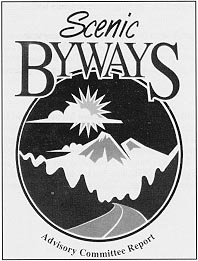
|
April 7
| 1957 | "The Chief," Thomas H. MacDonald, dies following a heart attack in College Station, Texas. According to State Highway Engineer Dewitt C. Greer, MacDonald "walked over to the cigar counter after a very pleasant dinner with his family and friends and bought a cigar, sat down on a comfortable divan and passed away." MacDonald was buried in Cedar Hill Cemetery in Suitland, MD, by the side of his first wife, who died in 1935. In a tribute, his friend Pyke Johnson of the Automotive Safety Foundation, describes MacDonald as "a statesman who built an enduring monument to himself not so much in roads and bridges as in the lives of people." Johnson concluded, "Few knew him. But those few knew him as one of the men of history, who with their associates, have profoundly affected the course of modern life." |
| 1977 | William M. Cox, a native of Madisonville, KY, is sworn in as Federal Highway Administrator by Secretary of Transportation Brock Adams. |
April 8
| 1912 | OPR's Paul Sargent chairs the day's session of the Southern Commercial Congress, reporting that in recent years, the South averaged $63 per mile on its entire system of roads. Later, he presents a paper on "What To Do As First Aid To Good Roads." (First thing: study traffic on the roads.)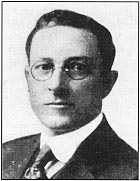
|
| 1927 | After meeting with Ross Sterling of the Texas Highway Commission on April 7 in Washington, DC, Chief Thomas MacDonald announces he will visit the State to determine whether to lift a suspension of Federal-aid project approvals. District Engineer A. R. Losh had suspended approvals on January 3 "until it has been satisfactorily shown that . . . funds are available, free from obligations," for necessary reconditioning and maintenance of completed Federal-aid projects. During MacDonald's visit in late April, he announces a resumption of normal relations. |
April 9
| 1943 | The Secretary of War authorizes PRA to construct the Haines Cut-Off to connect the Alaska Highway with Haines in the Alaska Panhandle. Ken Coates' 1992 book, North to Alaska: Fifty Years on the World's Most Remarkable Highway (University of Alaska Press), describes the Haines Highway in the early 1970's as "twisting, rocky, and rather terrifying." |
| 1985 | FHWA officially adopts AASHTO's A Policy on Geometric Design of Highways and Streets. Because of the color of its cover, the policy is nicknamed "The Green Book." |
April 10
| 1894 | With a letter to Secretary of Agriculture J. Sterling Morton, General Roy Stone transmits ORI Bulletin No. 8, Earth Roads: Hints on Their Construction and Repair. Stone compiled the information in response to the Secretary's ORI charter (see October 3, 1893), which called for information on the "best method of constructing a common highway, without gravel and stone." Hints are provided for earth roads in different States, drainage and construction, treatment of earth and sandy roads, grubbing and clearing for new roads in timbered regions, wagons for distributing crushed stone, and repair of country roads.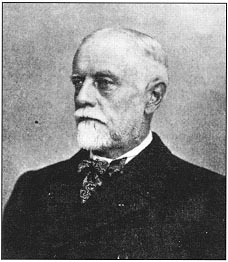
|
April 11
| 1895 | The California Bureau of Highways writes a letter to General Roy Stone: "It is with exceeding great pleasure we inform you that we this day organized the first State Bureau of Highways in the Golden State of California, and our first official act is to send you greetings and thanks, for we feel assured it was through your visit and the interest you created while here that the . . . bills were passed by our Legislature." |
April 12
| 1965 | Director of Planning E. H. "Ted" Holmes delivers the Sixth Rees Jeffreys Triennial Lecture at the Town Planning Institute in London, England. In "Looking 25 Years Ahead in Highway Development in the United States," Holmes says, "The highways and freeways being built today will be in use 25 years hence, and those yet to be built will not differ greatly from those we know today. Probably designed for higher speeds, certainly with more attention to aesthetics and their attractiveness both to the road user and others, major urban freeways will have special purpose lanes, perhaps for buses or trucks, perhaps reversible in peak hours, and with controls to insure that their potential capacity is more nearly approached."
"I can only urge that you observe our experience, appraise it in light of your conditions, and try not to make our mistakes." |
April 13
| 1971 | Under instructions issued by FHWA today, each urbanized area must be certified annually by the FHWA regional office as having an areawide policy board, an acceptable organizational arrangement to carry on the work, and an acceptable planning process. The FHWA Division Engineer can approve proposed projects only in certified areas and only if the project is part of a program that implements a plan held currently valid by the policy board. |
| 2008 | Jeffrey F. Paniati takes the oath of office as Executive Director, FHWA's highest career post. After joining FHWA in 1983 as a Highway Engineer Trainee, he served in a variety of posts, most recently as Associate Administrator for Operations. Secretary of Transportation Mary E. Peters recommended him for the post and he was approved by President George W. Bush. |
| 2009 | President Barack Obama visits DOT to announce funding for the 2,000th transportation project under the American Recovery and Reinvestment Act of 2009, only 6 weeks after the first project was approved under the recession relief legislation. The President, who is joined by Vice President Biden and Transportation Secretary Ray LaHood in the West Atrium, says, "I am proud to utter the two rarest phrases in the English language - projects are being approved ahead of schedule, and they are coming in under budget." |
April 14
| 1921 | AASHO's Executive Committee confers with President Warren Harding and Secretary of Agriculture Henry C. Wallace. The President states he is averse to funding road construction unless the highways will receive proper maintenance. |
| 1941 | President Franklin D. Roosevelt appoints the National Interregional Highway Committee, headed by Commissioner Thomas MacDonald, to refine the "Interregional Highways" concept described in the 1939 report to Congress titled Toll Roads and Free Roads. The seven-member committee is directed "to investigate the need for a limited system of national highways to improve the facilities now available for interregional transportation, and to advise the Federal Works Administrator as to the desirable character of such improvements, and the possibility of utilizing some of the manpower and industrial capacity expected to be available at the end of [World War II]." The committee's Interregional Highways report, transmitted to Congress on January 12, 1944, provides the basis for the "National System of Interstate Highways." (See December 20, 1944.)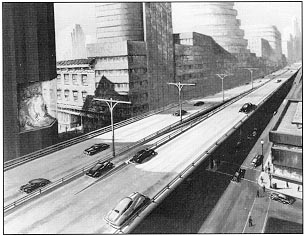
|
| 1960 | The Reporter, dated today, contains an article by future Senator Daniel Patrick Moynihan on "New Roads and Urban Chaos." It plays an important part, 31 years later, in debate on the landmark ISTEA. (See December 18, 1991.) "The crisis has come," Moynihan says. "It has been impossible for the cities to resist the offer of unprecedented amounts of money, however futile they might know it will be to spend it on highways alone. In one metropolis after another the plans have been thrown together and the bulldozers set to work." |
April 15
| 1909 | OPR's P. M. Speicher attends a good roads meeting of businessmen in Dennison, TX, to explain his tests of roadbuilding materials in Sherman County. He thinks it is possible to build excellent roads for about $3,500 a mile. |
| 1970 | Testifying before the Senate Public Works Committee, Administrator Frank Turner says that since the start of the Interstate Program in 1956, "we have provided more than 11 trillion vehicle miles of transportation over America's highways" (roughly 23 million round trips to the moon).
"By the time the Interstate System is complete the saving in operating costs alone will have amounted to at least $90 billion, enough to pay the entire capital cost and have a substantial amount left over, while the savings will continue to mount, year after year." |
April 16
| 1926 | The Ohio State Highway Commission opens bids for construction of a 4-mile section of the Lincoln Highway east of Delphos. Although the State had wanted a macadam surface, BPR refused to participate in anything less permanent than concrete on this major highway. Bids are $71,322 for oil-bound macadam, $72,156 for tar-bound macadam, $84,367 for Kentucky asphalt, and $91,982 for concrete. After some hesitation, the State awards the contract to G. H. Heffner for concrete construction. |
| 1938 | Chief Thomas MacDonald transmits a report to Colonel James Roosevelt discussing the feasibility of direct toll roads, with excess condemnation, on lines drawn by Roosevelt's father, the President, on a national map-the report is the predecessor to part one of Toll Roads and Free Roads. (See April 27, 1939.) |
| 1958 | President Dwight D. Eisenhower signs the Federal-Aid Highway Act, increasing Interstate construction funds and suspending the pay-as-you-go-feature of the Federal-aid highway program for FY's 1959-60 as part of an economic stimulus package. |
| 1963 | A motorcade of dignitaries from the United States, Canada, and Central and South America travels from Panama City to Mexico City in three buses to officially open the Inter-American Highway. The highway is now paved for 2,664 miles and the remaining 478 miles have an all-weather surface, making travel between the U.S. and Panama City possible at any time of year.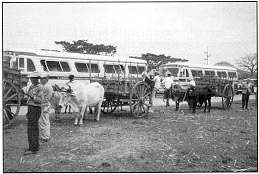
|
April 17
| 1925 | Construction begins on a 10.16-mile section of State Route 6 between Columbia and Mt. Pleasant, TN (completed October 2). At the contractor's request, BPR efficiency engineers make time studies of construction operations on this Federal-aid project. The experts make several suggestions to increase daily output. For example, use of a double hose connection on the cement mixer adds 20-30 minutes of running time each day and increases daily output by about 75 square yards. |
| 1962 | Administrator Rex Whitton testifies before the House Subcommittee on Roads in support of H.R. 11199, the Federal-Aid Highway Act of 1962, citing particularly its provisions for urban transportation. (See April 5, 1962.) |
April 18
| 1927 | In Morris et al v. Duby et al, the U.S. Supreme Court upholds the right of the State to regulate maximum loads to be carried by motor vehicles within the State over roads constructed with both State and Federal funds. The case stemmed from an Oregon Highway Commission decision lowering weight limits for trucks to 16,500 lbs (from 22,000 lbs) because heavier loads damaged the roads. |
| 1957 | Administrator Bert Tallamy joins Senator Prescott Bush in an interview taped as a "Report from Washington" for use on radio and television stations in the Senator's State, Connecticut. Tallamy reports that the Interstate Highway Program is on schedule and that State laws will permit the States "to adequately compensate all people that they must acquire right-of-way from." |
| 1972 | At a meeting of Federal and State highway officials in Albany, NY, FHWA unveils the "Federally Coordinated Program of Research and Development in Highway Transportation," aimed at creating a safer, more efficient highway system that is better integrated with other transportation modes. |
April 19
| 1968 | Administrator Lowell Bridwell reconfirms Federal approval of proposed I-40 through Overton Park in Memphis, TN. This action follows an April 5 resolution by the Memphis City Council endorsing the park route as "feasible and prudent." On March 3, 1971, in a decision written by Justice Thurgood Marshall, the Supreme Court orders reconsideration of the decision to build I-40 through Overton Park. In addition to requiring a change in the route of I-40, which will be shifted to the northern beltway, the decision provides a basis for interpreting the "prudent and feasible alternative" requirement of Section 4(f) of the DOT Act in future cases. (Section 15 of the Federal-Aid Highway Act of 1966, approved September 13, 1966, adds a similar provision to Title 23, United States Code, as Section 138, "Preservation of Parklands.") |
| 1995 | Julie Anna Cirillo is appointed Regional Federal Highway Administrator in FHWA's Region 9 (San Francisco, CA). She is the first woman to become an FHWA Regional Administrator. |
April 20
| 1901 | Director Martin Dodge accompanies the first Good Roads Train, sponsored by the National Good Roads Association, as it leaves Chicago, IL, for New Orleans, LA. The association pays the salary and expenses of OPRI expert Charles T. Harrison, who lectures on roads and supervises roadbuilding demonstrations along the way. Dodge later says, "This was undoubtedly the most successful campaign ever waged for good roads." |
| 1971 | Director of Environmental Policy Michael Lash opens the first FHWA Environmental Workshop for representatives of each regional office and several division offices. Associate Administrator for Right-of-Way and Environment John A. Swanson's keynote address stresses the important role FHWA must play in environmental design and analysis. |
| 1990 | On the 20th anniversary of Earth Day, Administrator Thomas Larson issues FHWA's Environmental Policy Statement, which re-dedicates FHWA to the "goal of leaving new generations with a better environment and a higher quality of life." |
April 21
| 1944 | Addressing the Highway Engineers Association of Missouri in St. Louis, Deputy Commissioner of Public Roads H. E. Hilts discusses "Cooperation is Essential in Building a National System of Interregional Highways," as the Interstate System is then called.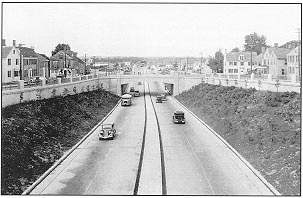
"The national role that highway transport has assumed, as the 'assembly and delivery line' for both war and peace products, is the clinching answer that can be made for the continuance of the wise policy of cooperation between the States and the Federal Government which was inaugurated by the Congress in the Federal Highway Act of July 11, 1916." |
|
| 1949 | In New Mexico, the footings for the east portal of a tunnel on BPR's Alamogordo-Cloudcraft Forest Highway Project are poured. The work is part of a project that includes concrete lining, pneumatic mortar lining, pavement, and portals of the tunnel bore driven in 1947. Because the project involves development of the only highway tunnel in the State, the project is of considerable public interest. On November 20, 1949, the day after the tunnel is completed, over 1,000 people attend the opening ceremony.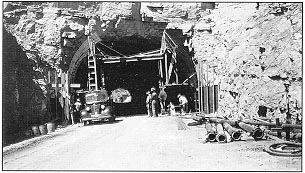
|
|
| 1994 | USDOT unveils "Share the Road," a national public service campaign to educate motorists on how to operate more safely amid large commercial vehicles. The campaign, administered by the Maryland DOT with a grant from FHWA, will inform motorists about limitations of trucks and buses in given situations. |
April 22
| 1905 | In Jacksonville, FL, OPR completes a 5,280-foot object lesson road, 15 feet wide, at a cost of $5,211.03. OPR's FY 1910 report notes the road was the best road in the area "and traffic, whenever possible, was diverted from other roads to it. In a year the travel over it had increased fourfold. A brickyard was established by the road and many very heavy loads were hauled over it . . . . Automobiles have increased in number from 100 in 1905 to 973 in 1910." |
| 1983 | In a memo to Executive Director R. D. Morgan from David K. Phillips, the Pavement Management Coordination Group notes that no significant road test work has been done since the AASHO Road Test was completed in 1960. The Group recommends short- and long-term initiatives to provide answers to complex pavement rehabilitation and design issues. On July 26, Administrator Ray Barnhart informs Associate Administrators and Regional Administrators that he has approved a program consisting of six interrelated activities aimed at providing sound information to pavement engineers. |
| 1994 | Administrator Rodney Slater and Acting NHTSA Administrator Christopher Hart walk from the USDOT Building to Capitol Hill to deliver the report to Congress on the "National Bicycling and Walking Study." Accompanied by a pedestrian convoy and police bicycle squads from local jurisdictions, they turn the report over to Representative Martin O. Sabo, who initiated the study. The report lays out an action plan to achieve the report's goals of doubling, from 7.9 percent to 15.8 percent, the percentage of transportation trips by bicycling and walking and to reduce, by 10 percent, fatalities occurring to bicyclists and pedestrians.
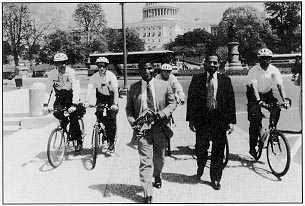
"The goals of doubling the current percentage of bicycling and walking trips and reducing by ten percent the number of pedestrians and bicyclists killed or injured are challenging, yet obtainable, and would reap significant transportation as well as other societal benefits . . . .We must continue working toward institutionalizing bicycling and walking to the Nation's transportation system at the Federal, State, and local levels." |
April 23
| 1921 | The 9th Annual Convention of the U.S. Good Roads Association and the Bankhead Highway Association closes its 6-day meeting in Greensboro, NC. Chief Thomas MacDonald delivered an address on road construction under the Federal-aid plan ("more or less of a statistical and technical nature but very illuminating," according to one reporter). Also during the convention, Senator J. Thomas Heflin of Alabama reviewed the benefits of the Federal-aid plan, while Senator Charles E. Townsend of Michigan denounced Federal-aid as a "pork barrel system" and asked for support of his bill for creating a national highway commission to build a national highway system. The convention endorsed "the Federal and State co-operative plan." |
| 1963 | A public hearing is held in Wilmington, NC, regarding the State Highway Commission's request for a permit from the U.S. Army Corps of Engineers for a bridge across the Cape Fear River. Although considerable opposition is registered, BPR representatives strongly recommend approval. The Corps later issued the permit. Construction begins in December 1965, and the Cape Fear Memorial Bridge, the first lift span in the State, is dedicated and opened on October 20, 1969, honoring the men and women of NC who gave their lives in the service of their country. |
| 1969 | In the FAA Auditorium, Secretary of Transportation John Volpe addresses FHWA's 2-day Equal Opportunity Workshop. Participants include engineers assigned EEO responsibilities in the 50 States and DC as well as Regional EEO Officers. They discuss methods by which FHWA can carry out its responsibilities for equal opportunity under Executive Order 1246, Title VI of the Civil Rights Act of 1964, and the Federal-Aid Highway Act of 1968. |
April 24
| 1942 | Because of a shortage of tankers and tank cars, the Petroleum Coordinator for War issues a recommendation that asphalt and tar for highway use be deferred unless certified by PRA as "necessary to the successful prosecution of the war." The recommendation applies only to 17 Atlantic seaboard States, but control is extended on July 2 to the western borders of Kansas, Nebraska, New Mexico, and the Dakotas. |
| 1957 | BPR's Floyd Oliver arrives in Tehran to head the Division Office in Iran for a 2-year program of highway maintenance and training of highway personnel. Funds for the project come from a $5 million credit to Iran by the Export-Import Bank, approved December 7, 1956. |
April 25
| 1939 | President Franklin D. Roosevelt submits Reorganization Plan No. 1 to Congress. The plan transfers BPR (renamed PRA) to the new Federal Works Agency and changes the title of the head of PRA to Commissioner of Public Roads. The Federal Works Agency also includes the Public Buildings Administration, the U.S. Housing Authority, the Public Works Administration, and the Work Projects Administration. Approved by Congress, via Joint Resolution, on June 7, the plan goes into effect on July 1, 1939. |
| 1979 | FHWA Division Office staffers in Oklahoma participate in an emergency preparedness exercise to test the State's highway emergency plans, with a mock nuclear attack on April 26 as the focus. |
April 26
| 1911 | Director Logan Page submits an application for a patent for a "process for mixing and preparing hydraulic cement concrete and the product thereof." In the application, which will be granted on August 15, 1911, Page states that, "My invention has for its object an improvement in the final product formed after the hydraulic cement mixtures or concrete mixtures have set and hardened in the usual well-known manner." The application states that the patent is "Dedicated to the Public." |
| 1967 | Winston Daniel and R. C. McIntire represent FHWA at inauguration of the last link of the Inter-American Highway in Nicaragua (Project No. 11-Nandaime-Rivas). President Lorenzo Guerrero and U.S. Ambassador Aaron S. Brown perform the ribbon cutting. The highway was constructed jointly by the U.S. and Nicaragua, with supervision by BPR.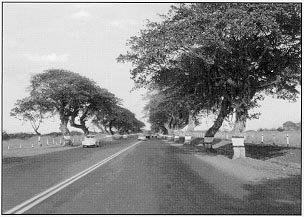
|
April 27
| 1909 | After blocking off a 2-mile section of Conduit Road above Cabin John Bridge in Washington, DC, Director Logan Page conducts experiments with high speed automobiles (50-60 m.p.h.) to test the effect of speed on macadam roads. Instantaneous cameras and moving picture machines record the effects.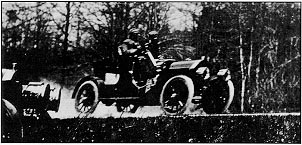
|
| 1939 | On the recommendation of Secretary of Agriculture Henry A. Wallace and Secretary of War Harry H. Woodring, President Franklin D. Roosevelt transmits Toll Roads and Free Roads to Congress, providing the first outline of the future Interstate Highway Program. Part I concludes that a 14,000-mile toll road network would not be self-supporting. Part II, "A Master Plan for Free Highway Development," proposes development of a 26,700-mile system of interregional superhighways with connections through and around cities. |
April 28
| 1903 | General Roy Stone, now Chief Engineer of the Union Terminal Company of New York, addresses the National Good Roads Convention in St. Louis, MO, on "Good Roads and How to Get Them." Yesterday, Director Martin Dodge spoke on "What the Federal Government is Doing." After describing the OPRI's work, Dodge had told the convention, "We are so much encouraged from the good results that have come from [object lesson road projects] that it would seem to be wise that the government should do more; not only more of the same kind, but contribute more largely to the cost of building."
"Good roads are coming whether by easy ways or hard. Federal aid is in the air; our young statesmen are eager to promote it, and our oldest no longer have the cold shivers when it is mentioned." |
| 1917 | OPR issues Standards Governing the Form and Arrangement of Plans, Specifications, and Estimates for Federal Aid Projects. The publication, which presents ideas on how surveys and plans should be made, was prepared by OPR in cooperation with AASHO. |
| 1971 | In a pine grove just off I-95 near Freeport, ME, Secretary of Transportation John Volpe says, "Take her down, boys," as a crane pulls the facing off the first billboard to be removed under the Highway Beautification Act of 1965. Volpe explains, "We realize that while the beauty of our landscape is more important than billboards, the billboard itself is not intrinsically evil. Therefore, this legislation provides just compensation for those whose signs are taken to benefit the commonwealth." The double-faced billboard had most recently advertised a Brunswick restaurant and a Falmouth music store. |
April 29
| 1903 | At the National Good Roads Convention in St. Louis, MO, President Theodore Roosevelt says, "When we wish to use descriptive adjectives, fit to characterize great empires . . . invariably one of the adjectives used is to signify that that empire built good roads . . . . The faculty, the art, the habit of road building marks in a nation those solid, stable qualities, which tell for permanent greatness." |
| 1994 | Acting Regional Administrator Dale Wilken joins U.S. Representative Solomon Ortiz, Texas DOT, and Port of Brownsville officials in the symbolic driving of a spike to begin the North Loop railroad relocation project. The project will provide an improved connection for the Union Pacific and Southern Pacific railroads and improve safety by eliminating at-grade crossings. |
April 30
| 1935 | President Franklin D. Roosevelt signs the Davis-Bacon Act applying prevailing wages to Federal projects. For BPR, because the States are the contracting Agency on Federal-aid projects, the act applies only to projects administered by BPR on Federal lands until the Federal-Aid Highway Act of 1956 applies the requirement to initial construction of the Interstate System (extended to other Federal-aid projects in 1968).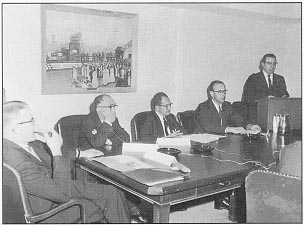
|
| 1964 | Acting Deputy Administrator Lowell Bridwell, Chief Engineer Frank Turner, and 8 other BPR officials explain the Federal-aid program to 11 visiting Japanese Prefecture Governors. For the occasion, the Administrator's conference room is equipped with simultaneous translation equipment. Bridwell explains that he is standing in for Administrator Rex Whitton, who had arrived in Tokyo for an IRF meeting the day the Governors left their country. |
| 1995 | Arthur E. Hamilton's promotion to Regional Federal Administrator in Region 7 (Kansas City, MO) is effective today. He becomes the first African-American to become an FHWA Regional Administrator. |
Also in April
| 1944 | AASHO's magazine, American Highways, publishes the "Foreword" for a new series, "Public Roads of the Past," by "The Old Roadbuilder" (Albert Rose, a BPR employee from 1919 to 1957). The first article, "How the Road Got Its Name," appears in the July 1944 issue. The series concludes in 1950 (and was published in book form under the series title in 1952) and a second series, "Historic American Highways," gets underway. The series continued until the October 1953 issue, but in the next quarterly issue (January 1954), the magazine noted that the voluminous second series would take 10 years to publish at the current rate. "With a feeling of sadness, therefore, we now bid adieu to this fascinating historic treatise. We express our sincere thanks to the 'Old Road Builder,' Mr. Rose, for his tireless and unremitting efforts to record in printed form a history of highway development." The second series was published in its entirely in 1953. (See October 17, 1979.)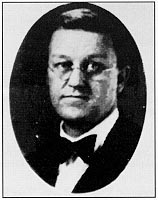
"The Old Roadbuilder" |
| 1958 | Architectural Record contains Lewis Mumford's "The Highway and the City," an early indictment of the Interstate Highway Program, particularly in urban areas. The article begins, "When the American people, through their Congress, voted a little while ago . . . for a twenty-six-billion dollar highway program, the most charitable thing to assume about this action is that they hadn't the faintest notion of what they were doing."
"When the American people, through their Congress, voted a little while ago for a twenty-six-billion dollar highway program, the most charitable thing to assume about this action is that they hadn't the faintest notion of what they were doing." |
| 1970 | Secretary of Transportation John Volpe agrees to shift the path of I-75 300 feet as it leaves Tampa, FL, to avoid disturbing an eagle's nest in the top of a 50-foot pine tree on the banks of the Manatee River, northeast of Bradenton. A pair of bald eagles moves into the nest each fall and departs as soon as their newly hatched eaglets are airborne. The shift, according to Administrator Frank Turner, points up the value of the public hearing process. "The eagle's nest was called to official attention during the initial public hearings on the extension of Interstate 75 from Tampa to Miami. The route was moved without a mummer of dissent, for everyone wants to do all he can to try to preserve this symbolic American bird which is on the verge of extinction." |
| 1971 | Bridge Division Chief W. Jack Wilkes opens FHWA's first 6-week Bridge Engineering Design Workshop. The workshop, directed by Stanley Gordon, provides a broad treatment of bridge engineering, followed by detailed consideration of relatively advanced bridge design. |
